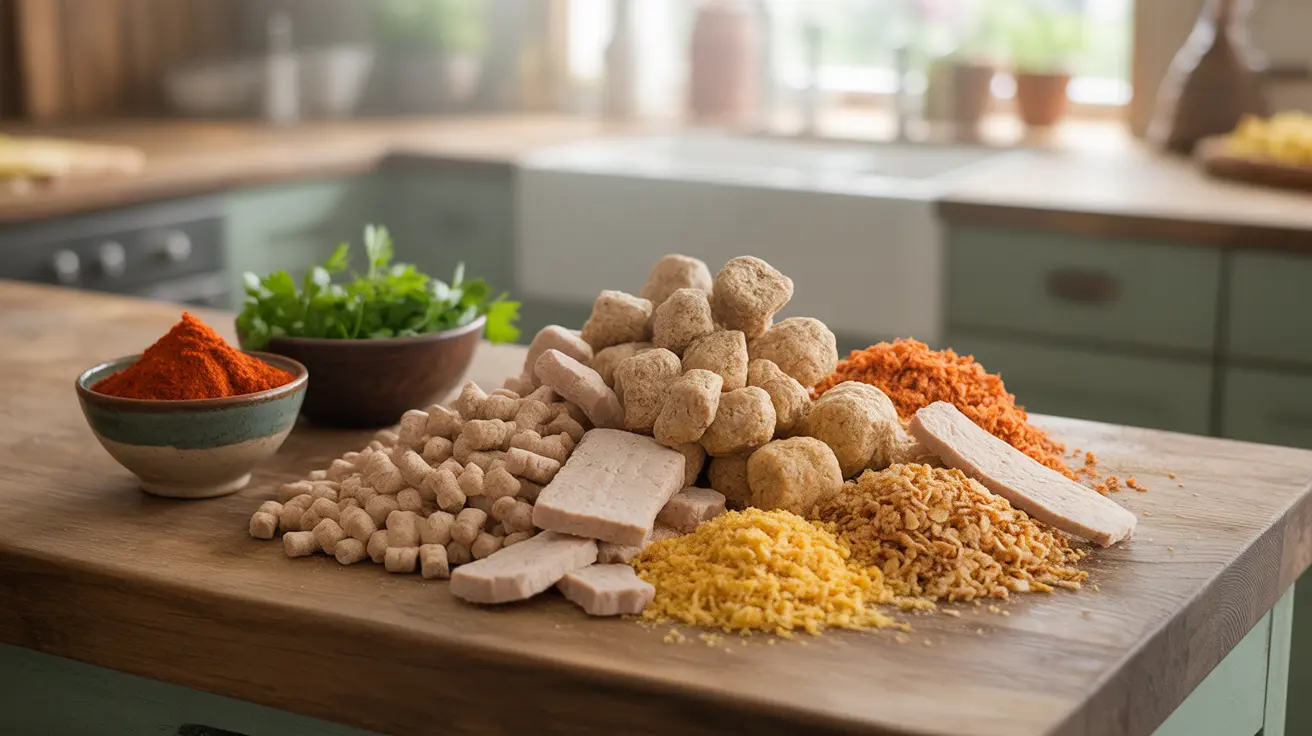Textured vegetable protein (TVP) has emerged as a versatile and nutrient-rich meat alternative that's gaining popularity among health-conscious consumers, vegetarians, and vegans alike. This soy-based protein offers a sustainable and economical way to add protein to your diet while maintaining the texture and satisfaction of traditional meat dishes.
Understanding what TVP is, its benefits, and how to use it effectively can help you make informed decisions about incorporating this plant-based protein into your meals. Let's explore everything you need to know about this remarkable meat substitute.
What is TVP and How It's Made
Textured vegetable protein is derived from defatted soy flour, a byproduct of soybean oil extraction. The manufacturing process involves extracting oil from soybeans, creating a protein-rich flour that's then processed through high-temperature extrusion. This process creates the characteristic texture that makes TVP an excellent meat substitute.
The resulting product comes in various forms, including chunks, granules, flakes, and strips, each suited for different culinary applications. The neutral flavor of TVP allows it to readily absorb the seasonings and flavors of whatever dish you're preparing.
Nutritional Profile and Health Benefits
TVP stands out for its impressive nutritional content, making it a valuable addition to any diet:
- High in protein (approximately 50% protein by weight)
- Low in fat
- Good source of fiber
- Contains essential minerals like iron and magnesium
- Cholesterol-free
- Low in calories
These nutritional characteristics make TVP particularly beneficial for those looking to increase their protein intake while managing calorie consumption or reducing their environmental impact.
Cooking with TVP: Preparation Tips
Preparing TVP is straightforward once you understand the basic principles:
- Rehydrate TVP before use (typically 1 part TVP to 1 part hot liquid)
- Let stand for 5-10 minutes until fully absorbed
- Season well during rehydration for better flavor absorption
- Use in place of ground meat in most recipes
The key to success with TVP lies in proper seasoning and rehydration. Using flavorful broths instead of water can significantly enhance the final taste of your dishes.
Storage and Shelf Life
One of TVP's advantages is its exceptional shelf life when stored properly:
- Keep in an airtight container
- Store in a cool, dry place
- Can last up to a year when stored correctly
- Once rehydrated, use within 3-4 days when refrigerated
Frequently Asked Questions
What is textured vegetable protein (TVP) and how is it made?
TVP is a defatted soy flour product that's processed through high-temperature extrusion to create a meat-like texture. It's made by removing oil from soybeans and processing the remaining protein-rich flour into various forms like chunks, granules, and flakes.
What are the nutritional benefits of incorporating TVP into my diet?
TVP is high in protein (about 50% by weight), low in fat, and rich in fiber. It provides essential minerals like iron and magnesium while being cholesterol-free and low in calories, making it an excellent choice for those seeking a nutritious meat alternative.
How do I prepare and cook TVP for the best texture and flavor?
To prepare TVP, rehydrate it using a 1:1 ratio of TVP to hot liquid (water or broth) and let it stand for 5-10 minutes. Season during rehydration for better flavor absorption, then use it as you would ground meat in recipes.
Is TVP a healthy meat substitute for vegetarians and vegans?
Yes, TVP is a healthy meat substitute for vegetarians and vegans, providing comparable protein content to meat while being completely plant-based. It's also versatile, affordable, and can be used in numerous recipes.
Are there any allergies or health considerations to be aware of when eating TVP?
Since TVP is made from soybeans, individuals with soy allergies should avoid it. Those with thyroid issues should consult their healthcare provider about soy consumption. Additionally, some people may prefer to choose organic TVP to avoid genetically modified soybeans.




